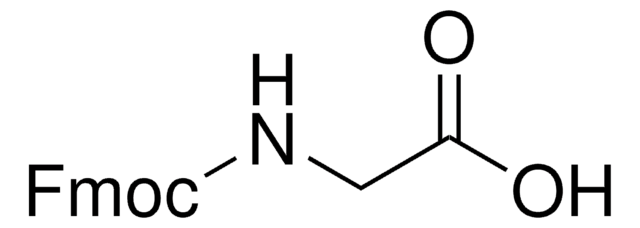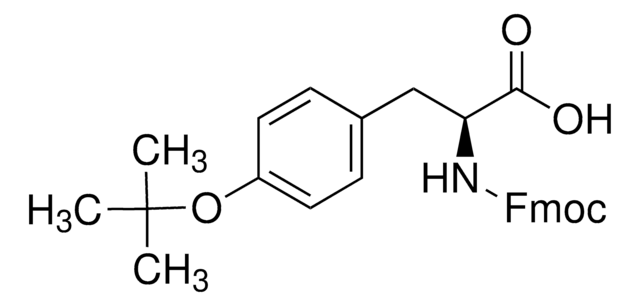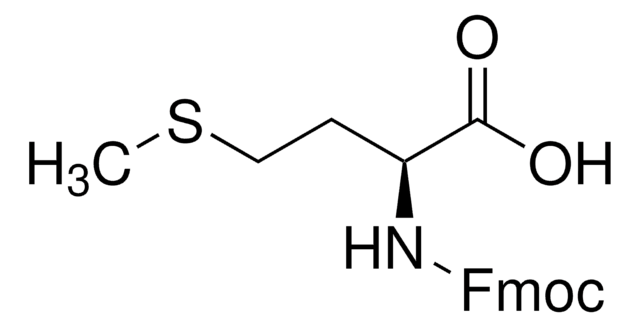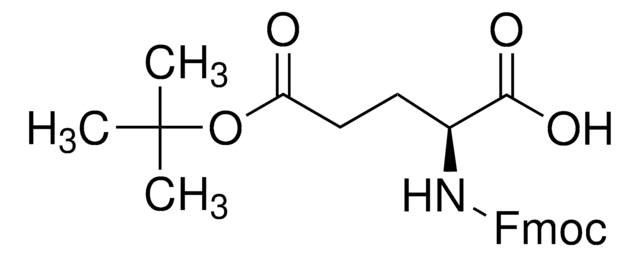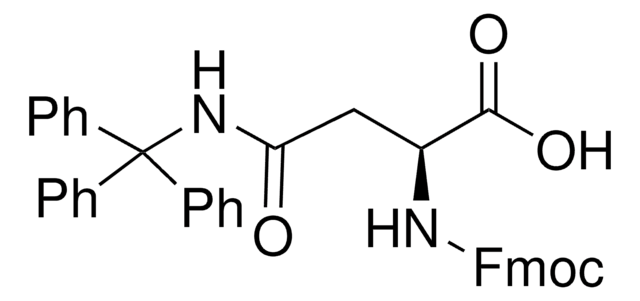47638
Fmoc-Val-OH
≥98.0% (HPLC)
Sinónimos:
N-(9-Fluorenylmethoxycarbonyl)-L-valine, Fmoc-L-valine
About This Item
Productos recomendados
Quality Level
assay
≥98.0% (HPLC)
form
solid
optical activity
[α]20/D −17±1°, c = 1% in DMF
reaction suitability
reaction type: C-H Activation
reaction type: Fmoc solid-phase peptide synthesis
reagent type: ligand
reaction type: Peptide Synthesis
mp
143-145 °C (lit.)
143-147 °C
application(s)
peptide synthesis
functional group
Fmoc
amine
carboxylic acid
storage temp.
2-8°C
SMILES string
CC(C)[C@H](NC(=O)OCC1c2ccccc2-c3ccccc13)C(O)=O
InChI
1S/C20H21NO4/c1-12(2)18(19(22)23)21-20(24)25-11-17-15-9-5-3-7-13(15)14-8-4-6-10-16(14)17/h3-10,12,17-18H,11H2,1-2H3,(H,21,24)(H,22,23)/t18-/m0/s1
InChI key
UGNIYGNGCNXHTR-SFHVURJKSA-N
¿Está buscando productos similares? Visita Guía de comparación de productos
General description
Application
- difficult sequence-containing pentapeptides using O-acyl isodipeptide unit
- peptides by backbone amide linker (BAL) strategy via Fmoc Solid-phase synthesis
Storage Class
11 - Combustible Solids
wgk_germany
WGK 3
flash_point_f
Not applicable
flash_point_c
Not applicable
ppe
Eyeshields, Gloves, type N95 (US)
Elija entre una de las versiones más recientes:
¿Ya tiene este producto?
Encuentre la documentación para los productos que ha comprado recientemente en la Biblioteca de documentos.
Los clientes también vieron
Artículos
With a growing peptide drug market the fast, reliable and uncomplicated synthesis of peptides is of paramount importance.
Nuestro equipo de científicos tiene experiencia en todas las áreas de investigación: Ciencias de la vida, Ciencia de los materiales, Síntesis química, Cromatografía, Analítica y muchas otras.
Póngase en contacto con el Servicio técnico


